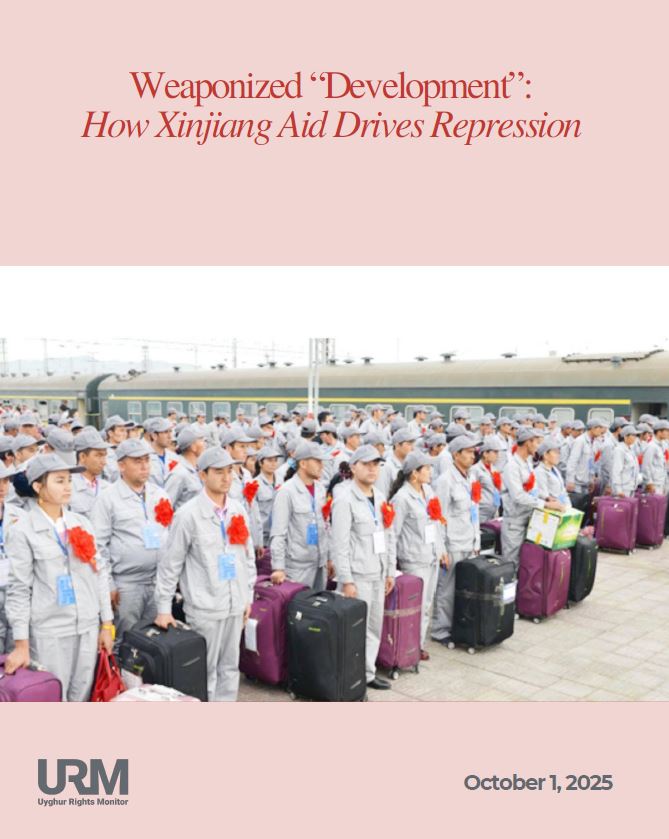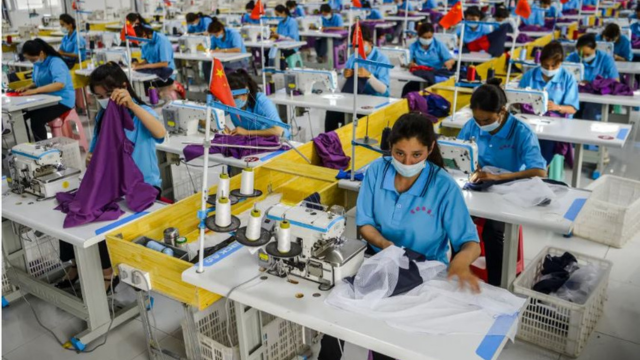Repackaging repression as “assistance” is a primary tool of Chinese propaganda. A report unmasks a strategy based on lies.
by Massimo Introvigne
10/29/2025, Bitter Winter
Development has become the language of legitimacy in an age of glossy infrastructure and televised ribbon-cuttings. But in “Weaponized Development: How Xinjiang Aid Drives Repression,” Uyghur Rights Monitor offers a sobering counter-narrative. This meticulously researched report reveals how state-led aid in China’s Xinjiang region is not a neutral act of generosity but a calculated mechanism of control that reshapes landscapes, identities, and beliefs under the banner of progress.
The report opens with a stark premise: “Development aid in Xinjiang is not simply about economic growth—it is a tool for enforcing ideological conformity and dismantling Uyghur identity.” From the outset, it challenges the assumption that roads, schools, and industrial parks are inherently benign. Instead, it shows how these projects are embedded in a broader assimilation, surveillance, and repression strategy. Aid is not distributed to empower communities, but to reengineer them. The authors trace how state subsidies, vocational training, and poverty alleviation programs are tied to political loyalty, religious compliance, and cultural erasure.
One of the report’s most compelling sections examines the role of “paired assistance” (对口援疆), a policy through which wealthier provinces are assigned to support Xinjiang’s development. On paper, it’s a model of interregional solidarity. In practice, it’s a pipeline for ideological export. “Paired assistance projects are not only economic—they are political instruments for exporting Han-centric governance and suppressing Uyghur cultural autonomy.” Factories built under these schemes often employ Uyghurs who have undergone “reeducation,” and their labor is monitored through digital surveillance systems. The report documents how aid funds are used to construct “model villages” where Party slogans replace religious symbols, and mosque demolitions are justified as “urban renewal.”
The authors also dissect the language of development itself. Terms like “poverty alleviation,” “modernization,” and “integration” are shown to be euphemisms for displacement and control. The state’s aid programs are designed to reshape Uyghur society, not empower it. Vocational training centers, for example, are presented as opportunities for upward mobility, but in reality function as sites of indoctrination. Religious practices are discouraged or banned outright, and participation in state rituals becomes a prerequisite for access to jobs, housing, and education.

What makes this report particularly powerful is its use of primary sources—government documents, budget allocations, and policy directives—to build its case. It doesn’t rely on speculation or hearsay. It shows, line by line, how development is weaponized. The authors highlight how aid is channeled through state-owned enterprises and local Party committees, creating a system where compliance is rewarded and dissent is punished. Even cultural festivals and tourism initiatives are repurposed to promote a sanitized version of Uyghur identity, stripped of religious and political meaning.
For readers attuned to the aesthetics of power—where architecture, language, and policy converge—this report helps decode soft authoritarianism. Its implications go beyond Xinjiang, pointing to the global implications of development as a tool of repression. The authors warn that similar models are being exported to other minority regions in China and potentially beyond. The report’s tone is restrained but urgent, and its prose is straightforward but evocative. It invites us to look beyond the scaffolding and ask: who benefits, and who disappears?
In short, “Weaponized Development” is essential for anyone who wants to understand how aid can be both a gift and a weapon. Stylishly written, meticulously sourced, and morally incisive, it carries a warning. It reminds us that progress without freedom is just another form of control.

